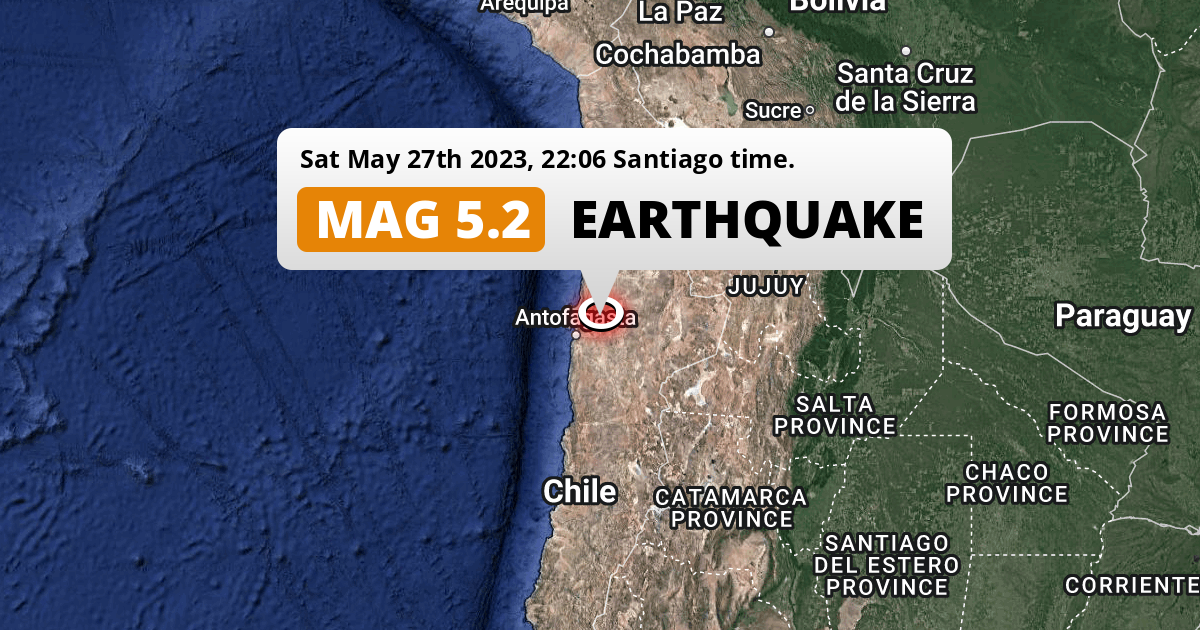Chile's Earthquake Crisis: Antofagasta Region Braces for Disaster
Located in the western edge of South America, Chile has long been known for its unique and often treacherous natural landscape. With its rugged terrain and fault lines, the country is prone to seismic activity, and in recent years, this has led to devastating earthquakes that have had a profound impact on the population. The most recent incident, which struck the Antofagasta region, has brought chaos to the area, with widespread destruction and a high risk of aftershocks.
The Antofagasta region is one of the most sparsely populated areas in Chile, with a population of just over 1.5 million people spread across a vast desert landscape. This makes it particularly vulnerable to the effects of natural disasters, as resources and emergency services are stretched thin. The region's economy is also heavily reliant on mining and agriculture, which makes the loss of infrastructure and crops all the more devastating.
The earthquake itself was a powerful one, with a magnitude of 8.8 and an epicenter located near the city of Illapel. The tremors were felt as far north as Peru and as far south as Argentina, and were so powerful that they were detected by seismographs around the world. The earthquake was followed by a series of aftershocks, including one of magnitude 7.8, which caused further damage and instability in the area.
Immediate Response and Relief Efforts
In the immediate aftermath of the earthquake, the Chilean government was quick to respond, with emergency services and relief teams rushing to the affected area. The government declared a state of emergency, mobilizing the military and activating the national disaster fund to provide aid and support to those affected.
Residents in the affected area were left to fend for themselves, with many struggling to access basic necessities such as food, water, and shelter. The lack of infrastructure and communication networks made it difficult for aid to reach those in need, and the situation was further complicated by the fact that many people were trapped in rubble or damaged buildings.
Economic Impact
The economic impact of the earthquake was significant, with many businesses and industries affected in the Antofagasta region. The mining industry, which is a major driver of the local economy, was particularly hard hit, with many mines damaged or destroyed. The agricultural sector also suffered, with many crops and livestock affected by the earthquake and subsequent aftershocks.
The earthquake also had a broader impact on the Chilean economy, with many experts predicting a significant decline in economic output in the short term. The country's reliance on mining and agriculture makes it vulnerable to natural disasters, and the impact of the earthquake will likely be felt for months or even years to come.
Key Statistics
- Magnitude of the earthquake: 8.8
- Epicenter location: near the city of Illapel
- Number of aftershocks: over 100
- Number of people killed: at least 25
- Number of injured: over 100
- Number of people displaced: over 100,000
Long-Term Recovery Efforts
As the immediate crisis begins to subside, the focus is now on long-term recovery efforts. The Chilean government is working to restore infrastructure and provide support to those affected, with a major focus on rebuilding damaged homes and businesses.
The government is also working to address the economic impact of the earthquake, with a major focus on supporting the mining and agricultural sectors. This includes providing financial aid and resources to businesses and farmers, as well as investing in new infrastructure and technologies to reduce the risk of future disasters.
Steps Being Taken
- Providing financial aid and resources to affected businesses and farmers
- Investing in new infrastructure and technologies to reduce the risk of future disasters
- Establishing a special task force to oversee the recovery effort
- Providing support and resources to affected communities, including food, water, and shelter
- Working with international partners to provide aid and support
Conclusion
The earthquake that struck the Antofagasta region of Chile has brought chaos to the area, with widespread destruction and a high risk of aftershocks. The government is working hard to respond to the crisis, providing aid and support to those affected and working to restore infrastructure and support the economy. As the situation continues to unfold, one thing is clear: the impact of this earthquake will be felt for months or even years to come.
Future Outlook
- The Chilean government is working to establish a long-term recovery plan, with a focus on rebuilding damaged infrastructure and supporting affected businesses and farmers.
- The mining and agricultural sectors are expected to be major drivers of the recovery effort, with many experts predicting a significant increase in production in the coming months.
- The international community is providing aid and support, with many countries sending teams and resources to assist with the recovery effort.
- The earthquake has highlighted the importance of disaster preparedness and mitigation, with many experts calling for increased investment in earthquake-resistant infrastructure and emergency preparedness measures.
Gina Wapd
Is Jennifer Lopez Pregnant
Jesse L Martin Relationship
Article Recommendations
- Matthew Gray Gubler Partner
- Chloandmatt Fans
- Gaz Coombes Wife
- Who Isteve Harvey Voting For
- Tim Miller Tyler Jameson Wedding
- Is Holly Rowe Married
- Brandon Frazier
- Nfl Retro Bowl 25
- Tiktok Unblocked
- Ali Macgraw



